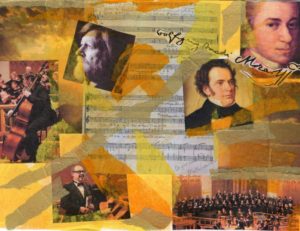Saturday, March 16, 2024 at 8:00 pm
Pre-concert talk at 7:00 pm by director Freddie Coleman
Featured Works
Lux Aeterna by Morten Lauridsen
Mass No. 2 in G Major by Franz Schubert
Misericordias Domini, K. 222, by Wolfgang Amadeus Mozart
Tickets are still available for purchase at the door!
The Seattle Choral Company’s mid-season concert brings back to the repertory a true masterpiece of the 20th century — Morten Lauridsen’s Lux Aeterna (Eternal Light). The SCC presented the first Seattle performance of this beloved contemporary work in May of 2000, with the composer (a Washington native) in attendance. About the performance, Seattle Times music critic Melinda Bargreen wrote, “The audience was already on its feet, with a standing ovation for the Seattle Choral Company’s first Seattle performance of Morten Lauridsen’s ‘Lux Aeterna’.”
“But when Lauridsen himself stepped onto the stage to acknowledge the applause, a football-stadium roar arose in the sedate confines of the… church. You don’t hear that kind of roar very often in performances of new music; it’s a response that indicates the audience has been moved, impressed and delighted by what it just heard.”
Since its world premiere in 1997, Lauridsen’s luminous Lux Aeterna has made a lasting international impact. Lauridsen’s music remains a powerful magnet for choral ensembles as well as music lovers around the world.
This concert will also feature two choral works from the 18th and 19th centuries: Misericordias Domini, K. 222, by Wolfgang Amadeus Mozart; and the Mass No. 2 in G Major, by Franz Schubert. Both of these works, written when the composers were quite young, express youthful energy and early genius. Mozart penned his Misericordias Domine when he was 19 years old, and Schubert composed his Mass in G Major at the age of 18.
Joining the Seattle Choral Company for the performance of Schubert’s Mass No. 2 in G Major will a trio of accomplished Seattle soloists: Ellaina Lewis, soprano; Brendan Tuohy, tenor; and Darrell Jordan, baritone. Once again, members of the North Corner Chamber Orchestra will complete the roster of guest artists for this concert of choral masterworks spanning three centuries.
Guest Artists
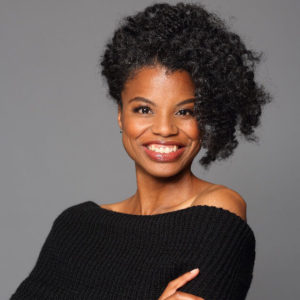
Ellaina Lewis, soprano
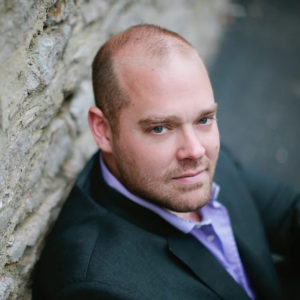
Brendan Tuohy, tenor
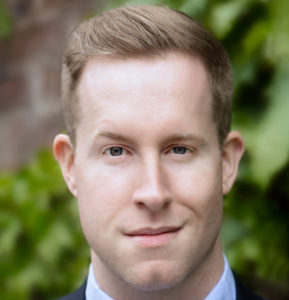
Darrell Jordan, baritone

Members of the North Corner Chamber Orchestra
About the Music
I. Introitus
II. In Te, Domini, Speravi
III. O Nata Lux
IV. Veni Sancte Spiritus
V. Agnus Dei / Lux Aeterna
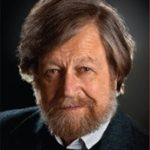
Morten Lauridsen
Born in Colfax, Washington, Morten Lauridsen came to USC to study with Ingolf Dahl, Halsey Stevens, and others. He joined the USC faculty in 1967 and has taught there ever since. He was composer-in-residence for the Los Angeles Master Chorale, which premiered Lux Aeterna in 1997. He was designated “American Choral Master” by the National Endowment for the Arts in 2006 and he received the National Medal for the Arts in 2007. A new recording of Lux Aeterna by the Chamber Choir of Europe was recently released on Deutsche Grammophon.
“Each of the five connected movements in this choral cycle contains references to “Light,” assembled from various sacred Latin texts. I composed Lux Aeterna in response to my mother’s final illness and found great personal comfort and solace in setting to music these timeless and wondrous words about Light, a universal symbol of illumination at all levels – spiritual, artistic, and intellectual.
The work opens and closes with the beginning and ending of the Requiem Mass, with the central three movements drawn respectively from the Te Deum, O Nata Lux, and Veni, Sancte Spiritus. The instrumental introduction to the Introitus softly recalls motivic fragments from two pieces especially close to my heart (my settings of Rilke’s Contre Qui, Rose and O Magnum Mysterium) which recur throughout the work in various forms. Several new themes in the lntroitus are then introduced by the chorus, including an extended canon on et lux perpetua.
In Te, Domine, Speravi contains, among other musical elements, the cantus firmus “Herzliebster Jesu” (from the Nuremburg Songbook, 1677) and a lengthy inverted canon on “fiat misericordia.” O Nata Lux and Veni, Sancte Spiritus are paired songs, the former an a cappella motet at the center of the work and the latter a spirited, jubilant canticle. A quiet setting of the Agnus Dei precedes the final Lux Aeterna, which reprises the opening section of the Introitus and concludes with a joyful celebratory Alleluia.”
— Morten Lauridsen
I. Kyrie
II. Gloria
III. Credo
IV. Sanctus
V. Benedictus
VI. Agnus Dei
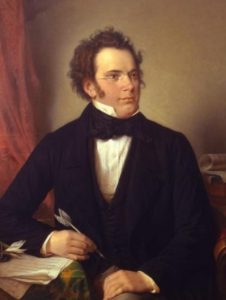
Franz Schubert
In all, Schubert wrote six Masses over a period stretching from his school days to the end of his life. All but the last were written for specific performances in local churches, and all are practical works reflecting Viennese performance customs of the time.
The beloved Mass in G Major was composed in 1815, not a happy year for Schubert. His voice having changed, he had left the imperial choirboy school, submitted to a brief course of teacher training and became a teacher in the school run by his father. He hated teaching; it held no interest for him and it kept him from his music. His stiff-necked father continually insisted that he put all thoughts of music out of his head and apply himself to the family enterprise. To make matters worse, he was in love, but without the means to support a family. The girl eventually married someone else.
With all his irksome duties, he still found time to compose. He made time to compose. That year was the most musically prolific in his life. He produced 145 incomparable art songs, including the masterpieces Heidenröslein and Der Erlkönig. The year saw the completion of two symphonies, a string quartet, two piano sonatas, and other works for solo piano. He wrote four dramatic works for the stage. There was also a good deal of sacred vocal music, including his Second and Third Masses.
The Mass No. 2 is simple and tuneful. It must have gladdened the heart of his teacher, Antonio Salieri, the Emperor’s music director, who had taken an interest in his progress when Franz was still a young lad at the choir school. The conservative Italophile Salieri would probably have disapproved of Schubert’s last two masses, with their daring harmonic turns and Germanic counterpoint, but the Mass in G has no critics, so direct and innocent is its idiom. Salieri could easily have renewed the phrase with which he had greeted the Mass No. 1: “Franz, you are my pupil and you are going to do me proud.”
Schubert wrote the Second Mass in just six days, and it was performed soon thereafter at the Liechtenthal Church, where he had sung as a boy. It is a small-scaled work, accompanied only by strings and organ. There is no instrumental introduction: the chorus begins immediately with the orchestra. The Kyrie sections of the first movement are subdued and homophonic, but the central Christe is a more personal soprano solo with choral extension. With an orchestra bound, the Gloria brings in a note of exultation, with a soprano and bass duet providing variety at the center. Schubert’s Credo begins in a hushed and reverent fashion, a far cry from the dogmatic counterpoint of Beethoven’s Credo in the Missa Solemnis. He returns to his innovation from the Mass No. 1 — that of bringing back the word “Credo” (I believe) to replace “Et” (And) at the start of the third section (concerned with the Holy Spirit). The brief choral Sanctus and the long trio of the Benedictus are concluded with identical fugatos of “Osannas.” Solo soprano and bass in turn sing the tender pleas of the Agnus Dei, echoed and concluded by the soft chorus.
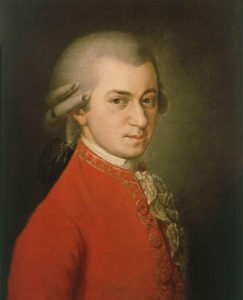
Wolfgang Amadeus Mozart
Mozart was commissioned to write this six-minute piece when he was only 19 years old in February of 1775, for a premiere in March of that same year. During this time, Mozart was appointed the assistant concertmaster for the Archbishop in Salzburg, and wrote many sacred works during this time period. Mozart wrote this piece at the request of the Elector Max III Thomas. The Elector specifically requested that Mozart demonstrate his approach to counterpoint in this piece.
Mozart is said to have written the piece in only a few weeks time before his departure from Salzburg. The fact that it only took only a few weeks to compose it is an amazing feat, even for Mozart, who was constantly busy writing, composing, conducting, and traveling.
Misericordias Domini is a piece that was traditionally used as an offertory in a mass, and is an exercise in contrapuntal techniques. Contrapuntal means a composition technique that uses multiple voices (polyphony) that also has uniqueness in rhythm and shape.
Mozart’s Misericordias Domini is not performed a lot, and it is not one of his most famous compositions. But we think you will agree that it is one of his best. Mozart’s writing here is magnificent. The key is D minor, the same key as his much more famous Requiem, which he wrote very close to the end of his life. The Requiem actually ends with the exact same chords in one part.
Another interesting feature of this early work is a melody carried in the violins that might very well have inspired Beethoven’s Ode to Joy!
Tickets are available for purchase at the door.

